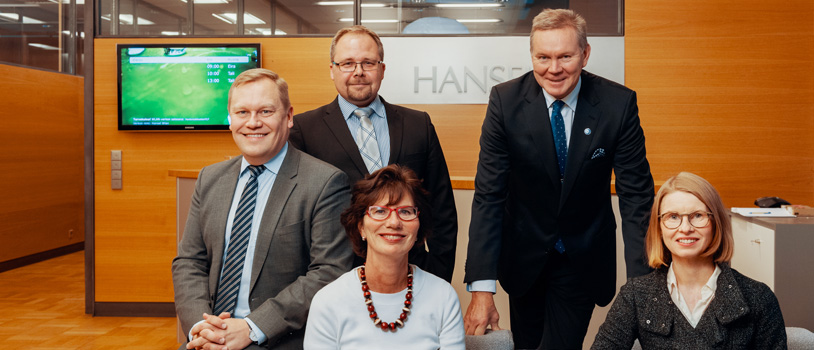
Organisation and business operations
Hansel’s organisation consists of personnel of 94 experts and a Board of Directors, elected by the Annual General Meeting. The Board is chaired by Timo Laitinen, Director General of the State Treasury. The Board of Directors consists of five members, including one personnel representative. Members of the Board of Directors cannot simultaneously be members of the company’s operative management.
Hansel’s Executive Committee is nominated by the Board of Directors on the basis of a proposal by the Managing Director. In 2017, the Executive Committee consisted of five people. These were Managing Director Anssi Pihkala (b. 1963), Chief Category Officer Susanna Närvänen (b. 1963), Head of Legal Affairs Eija Kontuniemi (b. 1966), Director of Finance Kirsi Koivusaari (b. 1966), and Account Manager Petri Kalavainen (b. 1962).
The members of the Board and the Executive Committee are appointed in accordance with the government’s ownership steering principles, which are used to ensure equality in operations, among other things.
Decisions are made in compliance with the Finnish Limited Liability Companies Act and Hansel’s articles of association. The company’s premises are in the main post office building in Helsinki. Hansel has no international operations.
Business operations
Hansel’s business operations are divided into three segments: central procurement, tendering services, and procurement development services. Development services became a separate unit on 1 January 2017. This is one of the company’s strategic foci.
Risks related to the company’s operations are charted with an external expert once a year, using a matrix analysis. In 2017, the management identified two risk factors, one of which is related to the availability of personnel and the other to changes in legislation and legal practices.
Central procurement
Central procurement refers to framework agreements and dynamic purchasing systems through which Hansel’s customers can purchase products and services. The purpose of central procurement is to establish the general terms governing procurement contracts, such as the subject matter of procurement, prices, and the responsibilities and obligations of the contracting parties. By using Hansel’s contracts, customers can ensure that their procurement processes are compliant with applicable laws, as well as facilitate the management of contracts and suppliers. During central procurement, Hansel checks the eligibility of suppliers, and it also monitors that suppliers meet their contractual obligations and eligibility conditions during the validity of the contract.
Savings are generated when sufficiently large volumes of products and services are put out to tender, and the needs of the maximum number of customers are met. Central procurement generates considerable savings for the government, through both procurement process costs and pricing.
Hansel supports its customers in internal central tendering processes, so-called simplified tendering processes. In the Minikisa Plus service, Hansel performs a tailored simplified tendering process on a turnkey basis.
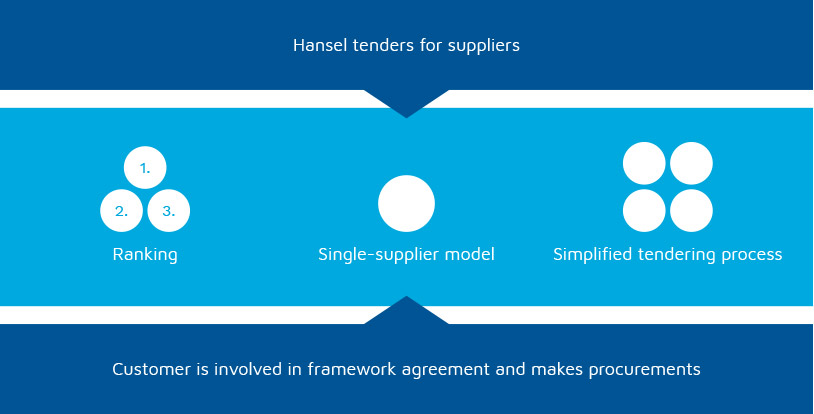
Tendering and legal services
Tendering services are needed when a framework agreement or a dynamic purchasing system does not exist for the object of acquisition. Hansel’s tendering consultants and lawyers have specific experience and knowledge of public procurement, competitive tendering, and contract law. By using our expert services, customers can ensure that acquisitions are put out to tender in accordance with valid rules, with the best contractual terms possible, taking price, quality, and responsibility factors into account. This frees the customer’s time for other duties, reduces the procurement unit’s risks, and promotes the distribution of best practices.
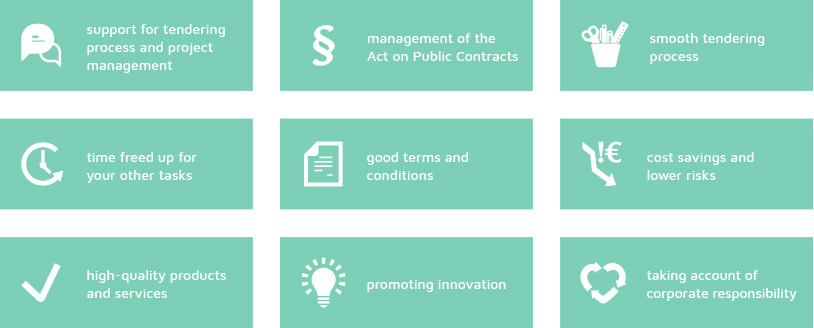
Development of procurement
The procurement development services support the efficiency and cost-effectiveness of procurement, as well as the organisation’s capability for reform. Experts provide analysis services, proposals, and solutions for the efficient management and responsible implementation of procurement. They use a great variety of tools and information to analyse the current status of procurement services and to improve its impact. Development processes are generated in close cooperation with the customer.

Organisation
Internal audit
The role of an internal audit is to support the Board of Directors and the Managing Director in supervisory duties prescribed by law and the Board’s rules of procedure, and to perform other internal audit and risk-management-related duties assigned by the Managing Director and the Board of Directors.
Read more >>



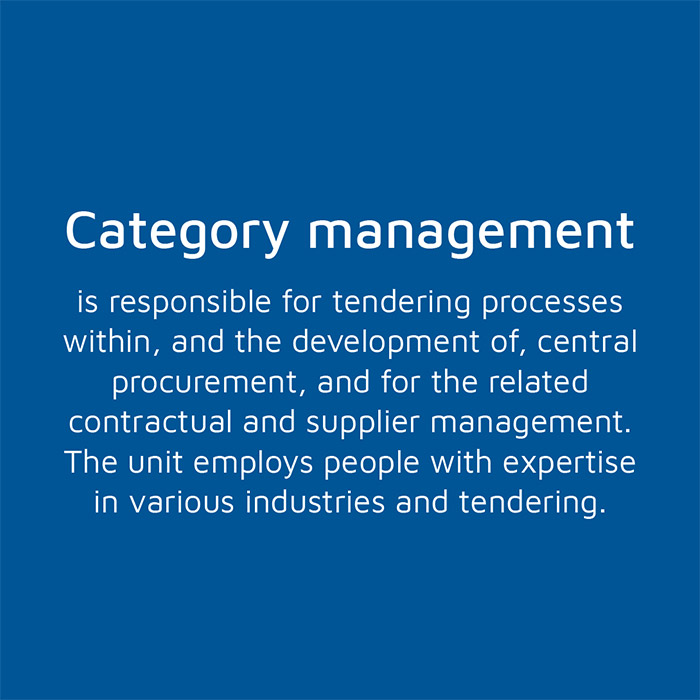
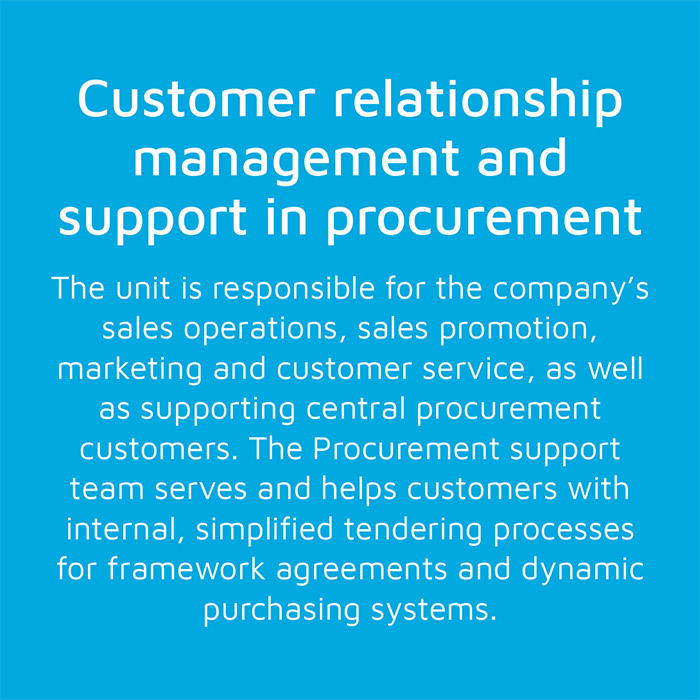
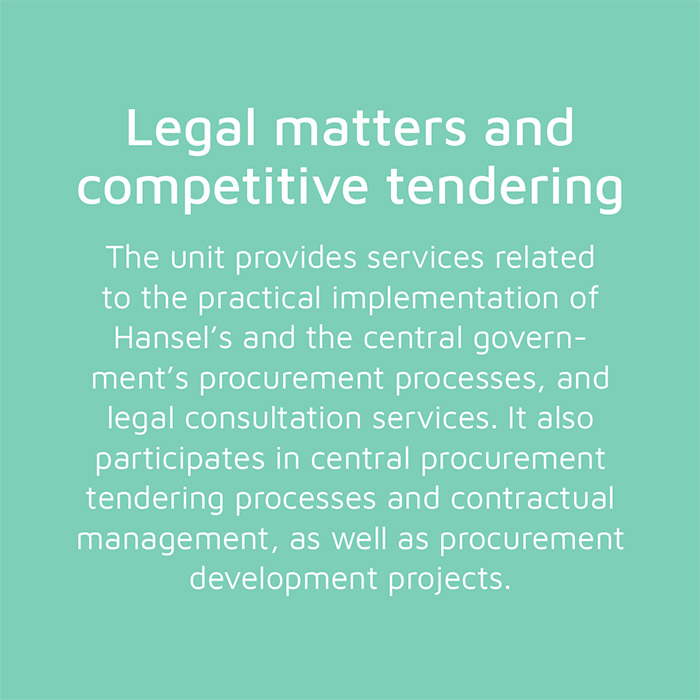
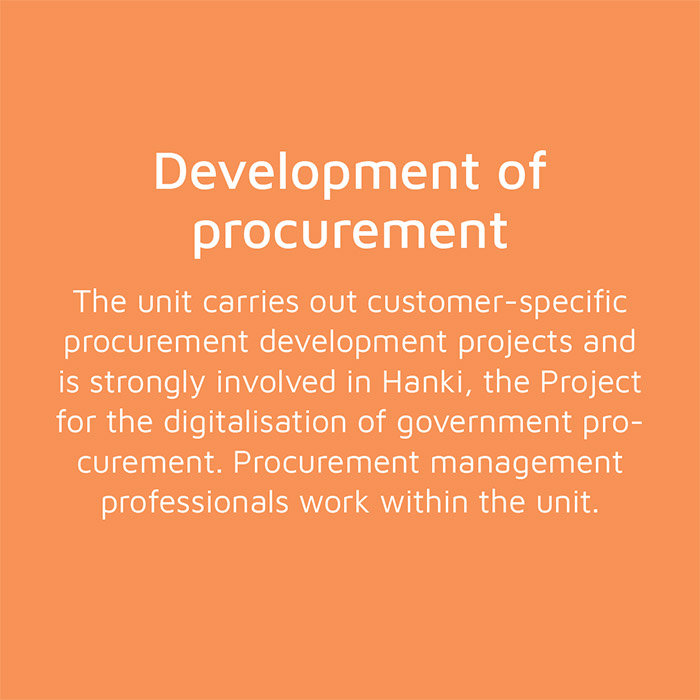
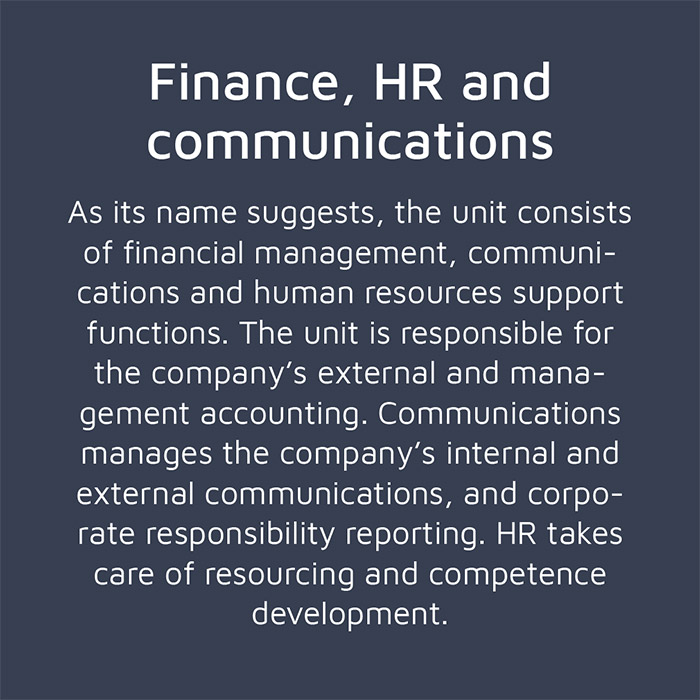
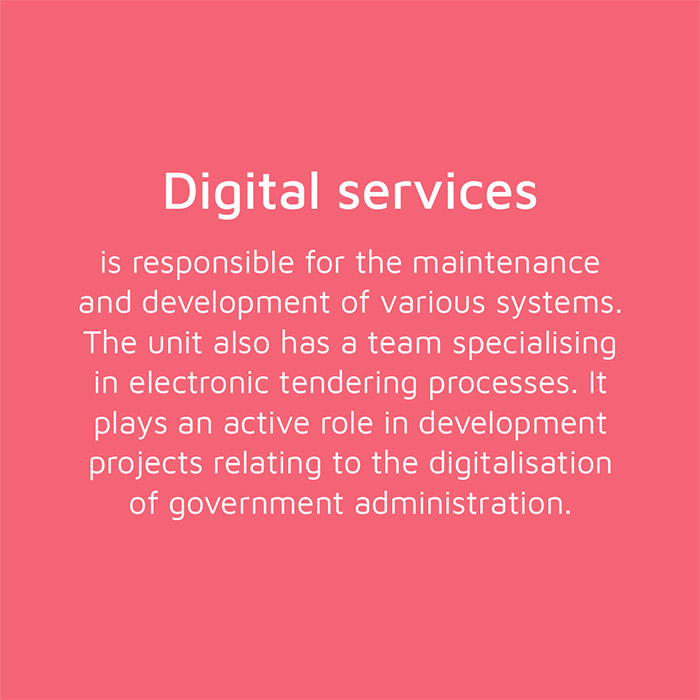
 Read next
Read next